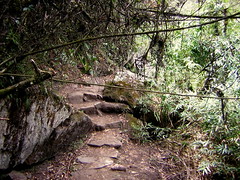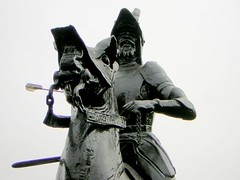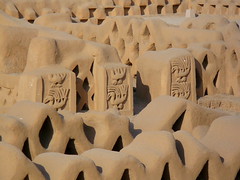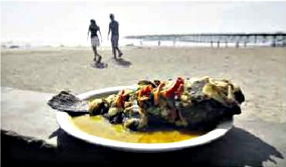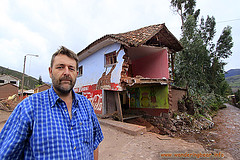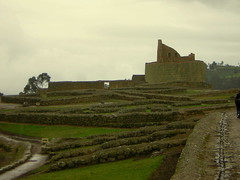Inti Raymi: Cultural Preservation or Capitalistic Exploitation? [Featured]
With tickets sold to tourists priced at $80 each, indigenous Cusqueños are effectively barred from the modern-day recreations of their ancestors’ most important religious event, Inti Raymi. Is there anything left in this “ritual” that reflects the Inca empire’s glorious past, or is it all a show put on to make money from tourists? Camden Luxford explains.
It’s blisteringly hot and I huddle under Gabriel’s hoodie, longing for home, for a bottle of luxuriously thick 60+ factor sunblock, for ice-cream. Below us, richly costumed dancers the size of chess pieces move in precise geometric patterns about the central faux-stone platform. The ruins of Sacsayhuamán provide a stately backdrop. Further below is the city of Cusco, and to our right are golden-green rolling Andean hills.
The Inca, the emperor from which an entire culture drew its name, and his high priest speak at length in Quechua, striding about their stone platform with arms spread. The script in front of me tells me it’s the “coca ritual,” but I’m tired of the incomprehensible speeches and let my attention wander to the people around me.
The woman in front is full of vivid energy, threateningly waving a bag of rubbish at the child in front of her every time he stands up, turning to offer us some of her fruit, laughing long and loud. To our right is a more serious, middle-aged señora, in the colourful, voluminous skirt favoured by Andean women, her long dark hair in two joined braids. Her energy has obviously been sapped by the long wait. I overhear her grumpily informing someone who is infringing on her space that she has been here since 5 am.
This is Inti Raymi: a grand festival stitched together in 1944 from colorful scraps left by Incan historians, archeological finds and the contemporary rituals of indigenous communities. It was one of the four most important of the Incan celebrations carried out in Cusco – the center of the Empire and the navel of the world. Taking place on the winter solstice, when the Sun God is furthest from his children, it celebrated the origin myth of the Incas, gave thanks for a good harvest, and pleaded with the Sun to return and ensure the continued fertility of the Earth.
Then the Spanish arrived. In 1572 Viceroy Francisco de Toledo declared the festival pagan and contrary to the Catholic faith and absolutely prohibited its practice.
Today it has surged once again to become the second biggest festival in South America, second only to Brazil’s Carnival. More than 150,000 foreign and local tourists descend on Cusco each year, most paying US$80 for a reserved seat in the grandstands closest to the action.
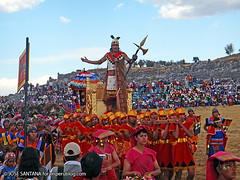
Sapa Inca
We sit on the rocky outcrop above the performance space, having arrived at 8:30 am to find around 100 people already there. We dozed, chatted and made sandwiches as we watched the crowd grow over the course of hours. Now, with the performance in full swing there are thousands of people pressing in on all sides; they are mostly local indigenous families but with a handful of foreigners mixed in. Vendors are hawking everything from hats to potato crisps to pollo al horno, and the warm smell of sweat and greasy chicken hangs over the crowd. An enthusiastic young man to our left gets us all involved in an erratic Mexican wave as the hour draws nearer and the excitement peaks. It feels like a football match.
Those with reserved seats trickle into place with minutes to spare. At 1:30 pm a steady drumbeat fills, and a procession of stately Incan nobles begin to descend from the ruins to the wide open space at our feet.
Earlier I’d asked Gabriel why the tradition had been revived. “Turismo, supongo,” he’d scoffed. And it is, no doubt, a grand source of income for a city that has come to thrive on the tourist dollar. But as I sit among throngs of locals who had waited hours in the hot sun and now proceed to yell and hurl rubbish at those who dared to stand and block the view, I wonder if it’s so simple…
Tags: beliefs, cusco, incas, inti raymi, traditions




